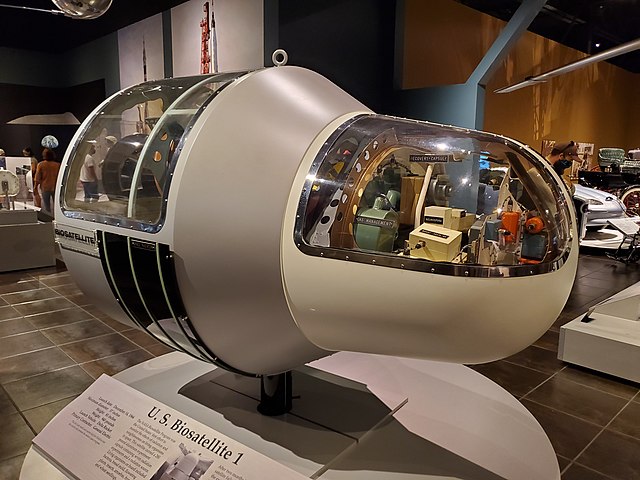Top Qs
Timeline
Chat
Perspective
Biosatellite 1
From Wikipedia, the free encyclopedia
Remove ads
Biosatellite 1, also known as Biosat 1 and Biosatellite A, was the first mission in NASA's Biosatellite program. It was launched on December 14, 1966, by a Delta G rocket from Launch Complex 17A of the Cape Canaveral Air Force Station[3] into an orbit with a 296-kilometre (184 mi) perigee, 309-kilometre (192 mi) apogee, and 33.5 degrees of orbital inclination, with a period of 90.5 minutes.[4]

Biosatellite 1 was carrying several specimens for studying the effects of the space environment on biological processes. Prior to reentry, the entry capsule separated from the satellite bus properly, but the deorbit motor failed to ignite, leaving it stranded in a slowly decaying orbit. It re-entered and disintegrated on February 15, 1967.
Remove ads
Experiments
- Effects of Weightlessness on Wheat Seedling Morphogenesis and Histochemistry
- Growth Physiology of the Wheat Seedling in Space
- Biochemical Changes in Developing Wheat Seedling in Weightless State
- Effects of Weightlessness of the Dividing Egg of Rana Pipiens
- Mutational Response of Habrobracon
- Liminal Angle of a Plagiogeotropic Organ under Weightlessness
- Effects of Radiation and Weightlessness on Tribolium Pupae
- Effects of Weightlessness on Radiation Induced Somatic Damage in Drosophila
- Effects of Space Environ on Radiation- Induced Damage to Repro Cells of Pupae
- Genetic and Cytologic Studies of Tradescantia Irradiated During Flight
- Combined Effects of Weightlessness and Radiation on Inact.+Mutation-Induct
- Spc Flt Eff-Gamma Rad Interaction on Growth+Induction of Lysogenic Bacteria
- Effects of Weightlessness on Amoeba, Pelomyxa Carolinensis[1]
Remove ads
References
Wikiwand - on
Seamless Wikipedia browsing. On steroids.
Remove ads

